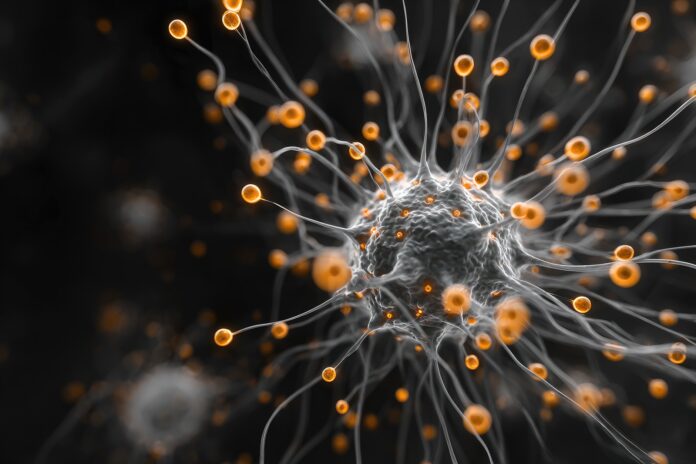Engineered Viruses: The New Frontier in Neuroscience and Brain Disease Treatment
Engineered viruses are rapidly transforming the landscape of neuroscience, propelling us into an era where brain disease treatments and fundamental discoveries are more achievable than ever. These cutting-edge biological tools have advanced far beyond the stuff of sci-fi, now driving real progress in diagnosing, understanding, and treating some of humanity’s most challenging neurological conditions.
How Engineered Viruses Paved the Way for a Neuroscience Revolution
Decades ago, researchers struggled to efficiently and safely introduce genetic changes into neurons. Because the nervous system is both intricate and protected, many molecules can’t cross the blood-brain barrier. Engineered viruses, especially adeno-associated viruses (AAVs), changed this by providing targeted, safe delivery vehicles. Most importantly, AAVs and similar vectors can enter precise brain regions, enabling scientists to switch genes on or off and observe real-time effects at the cellular level.
For example, they allow detailed mapping of neural circuits—something once thought impossible. By introducing fluorescent proteins with engineered viruses, scientists visualize how specific neurons communicate, illuminating everything from sensory input pathways to disease spread, as highlighted by groundbreaking research in Nature.
Transforming Treatment for Brain Diseases
The most exciting applications of engineered viruses lie in the treatment of brain diseases. Over the past decade, therapies using viral vectors have gone from bold vision to clinical reality. Take the treatment of spinal muscular atrophy (SMA) with Zolgensma (an AAV-based gene therapy). Infants with SMA, once facing fatal prognoses, now have the opportunity for near-normal development. Besides that, gene therapies delivered by viral vectors are under active investigation for conditions like Parkinson’s disease, ALS, Huntington’s, and even certain brain cancers.
Therefore, viral vectors introduce corrective genes or silence malfunctioning ones directly in affected neural tissues. These therapies offer a degree of personalization and precision that traditional medicine cannot match. Clinical trials led by prominent institutions, such as the NIH, show success in delivering enzymes or growth factors to halt or slow disease progression. Meanwhile, the explosion of CRISPR technology—when paired with viral delivery—brings gene editing within reach for inherited brain disorders.
Expanding Possibilities: Brain Mapping, Research, and Diagnostics
Engineered viruses play a pivotal role beyond therapy. Scientists use these vectors to deliver genes for molecular markers or sensors, illuminating activity patterns in live brains. Projects like the Human Brain Project rely on viral vectors to build comprehensive connectome maps, tracing the web of neuronal connections. Because these viral tools can be crafted for remarkable specificity, researchers link neural circuitry to behavior, learning, memory formation, and even emotional processing.
Importantly, viruses can also deliver sensors that highlight changes associated with disease before symptoms appear. This powers earlier, more accurate diagnostics and supports the development of preemptive treatments. As methods improve, expect to see engineered viruses playing a vital role in early intervention and precision medicine.
Safety, Ethics, and Regulatory Oversight
With these advances come critical questions about safety and responsibility. Viruses’ inherent ability to alter genetic makeup has spurred rigorous oversight, including clinical safety studies, regulatory review, and continuous ethical evaluation. Modern viral vectors have been refined to reduce off-target effects, immune reactions, and toxicity. For instance, current generations of AAVs rarely cause harmful immune responses, as shown in recent meta-analyses and peer-reviewed neurology journals.
Ethical use is always front of mind. Researchers prioritize patient consent, data privacy, and transparent communication. Additionally, regulatory bodies like the FDA, EMA, and national review boards ensure that gene therapies using engineered viruses meet high standards for efficacy and safety. Collaboration between scientists, clinicians, ethicists, and patient advocates shapes ongoing policy and research priorities.
Challenges and Limitations
Despite their promise, engineered viruses face limitations. Some viral vectors can only deliver small genes, which restricts their use for disorders caused by large or complex genetic mutations. Manufacturing scalability and cost also remain significant hurdles. Another challenge involves ensuring long-term therapeutic effects, as some delivered genes may lose efficacy over time. Researchers are actively developing new generations of viral vectors and auxiliary technologies to address these gaps, aiming for broader applicability and durability.
The Road Ahead: What’s Next in Virus-Based Brain Therapies?
Innovation continues to accelerate. Scientists are engineering more precise, efficient, and versatile viral vectors capable of navigating the brain’s complexity. These advances promise to expand the range of treatable brain diseases, make brain mapping even more accurate, and unlock new research into cognitive enhancement, aging, and repair.
Importantly, interdisciplinary collaboration stands at the core of progress. Virologists, neuroscientists, geneticists, clinicians, and ethicists must work together to translate breakthroughs from the lab bench to the bedside responsibly. As they do, engineered viruses will help create increasingly effective and personalized brain therapies. Already, visionaries predict a near future where these tools not only cure neurological disorders but also support cognitive resilience, mental health, and even optimized brain-machine integration.
Conclusion: Engineered Viruses Reshape Our Approach to the Brain
The story of engineered viruses in neuroscience is just beginning. Their unique ability to safely and precisely alter brain activity, treat genetic and complex diseases, and reveal unseen neural pathways sets the stage for revolutionary changes in medicine and research. Although challenges remain, the course is clear: engineered viruses are transforming neuroscience and treating brain disease, guiding us toward a new chapter in understanding and healing the brain.
For those eager to follow or contribute to this dynamic field, organizations like the Society for Neuroscience and journals like Neuron offer the latest developments, networking, and resources to support curious minds and future pioneers.



